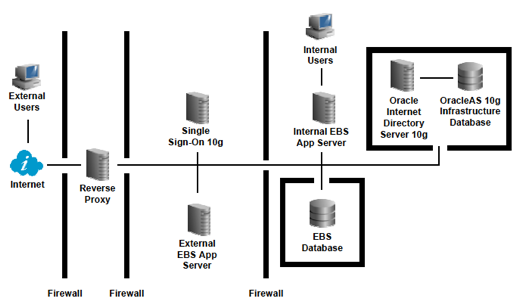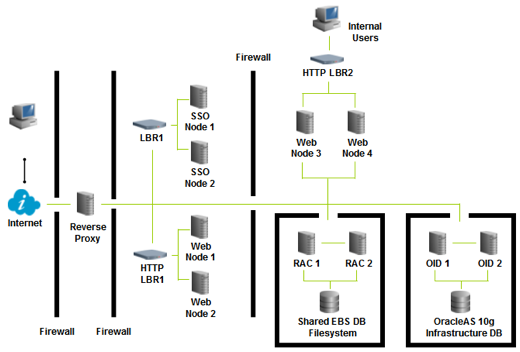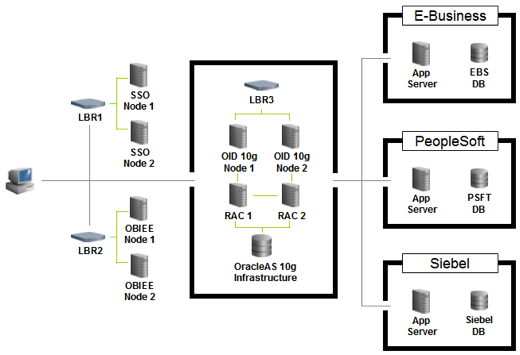I’m (still) highlighting OpenWorld 2008 presentations that cover some of the most popular E-Business Suite technology stack topics. A catalog of all of the Applications Technology track sessions with links to the presentations is available here:
E-Business Suite sysadmins know that there are a lot of different ways to deploy their system in production. You can split EBS services across multiple application tier and database tier server nodes, you can scale up with load-balancers and Real
Application Clusters, you can integrate your E-Business Suite instance with optional external services like Oracle Single Sign-On and the Oracle SOA Suite, and much, much more.

The number of architectural options can be pretty bewildering, and it can be difficult to get a high-level overview of the relative benefits of each option. We have lots of detailed documentation and introductory blog articles on, say, implementing
RAC, but it’s very difficult to get a sense of whether you can combine a reverse proxy in front of a load-balanced cluster with a RAC-enabled database tier (this is feasible, by the way).

Clearly, there’s a pressing need to summarize what’s possible in a quick and easily digestible overview. If you like architecture diagrams, here’s an attempt to overload you with more physical architectures than you might have seen before in a single
place. Ivo Dujmovic is a Director and architect in our Applications Technology Integration group, and a contributing author for this blog. Ivo and I presented the following session at OpenWorld:

Ivo and I covered the following topics in our session:
An overview of EBS Architectural goals:
Ensuring maximum security
Ensuring maximum performance & scalability
Ensuring business continuity
Providing “extra” services to end-users
Integrating with other systems
Providing dynamic capacity
Options for ensuring maximum security
Demilitarized zones (DMZ)
Reverse Proxy Servers
Enabling Single Sign-On capabilities
Feasible combinations of DMZs, reverse proxy servers, and Single Sign-On configurations
Options for maximizing performance and scalability
DNS and HTTP Load-balancers
Active-Active versus Active-Passive configurations
Real Application Clusters (RAC)
Web Cache clusters
Feasible combinations of load-balancers, reverse proxies, DMZs, and RAC configurations
Options for ensuring business continuity
Active-Passive architectures for the E-Business Suite
Routing to backup data centers via DNS-based LBRs
Options for providing “extra” services to end-users
Single Sign-On, Oracle Access Manager, Oracle Internet Directory, Oracle Web Center, Oracle Portal, Oracle Discoverer, Oracle Business Intelligence Applications
Feasible combinations of some of the above, including RAC, DMZs, load-balancers, and the kitchen sink
Options for integrating with other systems
Via Oracle Integration, Oracle SOA Suite
Integration with third-party LDAP and authentication systems via Oracle Single Sign-On and Oracle Internet Directory
EBS and other Oracle ERP systems like PeopleSoft sharing a central Oracle Identity Management system for Single Sign-On
Feasible combinations of these technologies
Considerations and future plans around dynamic capacity provisioning
Cloud computing
Options for deploying E-Business Suite environments in cloud environments
Implications, possible benefits, and glimpses into future functionality
Related Articles
- Humana Case Study: Implementing a Highly Available Oracle E-Business Suite Architecture (OpenWorld 2008 Recap)
- Maximum Availability Architecture: Oracle E-Business Suite Release 12
- E-Business Suite Technology Essentials (OpenWorld 2008 Recap)
- Using Oracle Application Server 10g with E-Business Suite (OpenWorld 2008 Recap)
- Loopbacks, Virtual IPs and the E-Business Suite
